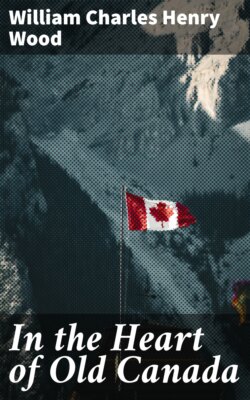Читать книгу In the Heart of Old Canada - William Charles Henry Wood - Страница 6
На сайте Литреса книга снята с продажи.
ОглавлениеCHAPTER I
Table of Contents
THE LANDMARKS OF CANADA
Table of Contents
Canada to-day, exultant over a heritage of lands outstretching any other in our world-wide Empire, exultant over their illimitable riches, above ground and below; exultant, too, and with better cause, over the abounding vigour of her home-grown breed of pioneers, and over her native strength of dike and channel, to turn the inrushing human tide into many fructifying streams before it floods her waiting wilderness—this Canada, even to-day, can only draw the full depth of inspiration for her future from the glories of that past which is the very source of all her being.
And what a past is ours! Measured by mere lapse of time it is the longest in the experience of any of the self-governing dominions oversea; measured by its years of crowded life the most intensely interesting; and by its moving incidents the most romantic of them all. Through both régimes fortune has led us to be always first: in discovery, in settlement, in mighty wars, in parliaments, and in confederation. We are no new-transplanted stock; but scions of deep-rooted generations, each working out its own well-wrought career, yet all of them inevitably tending to unite free parts within a nation, and, in its turn, this, with other free and equal nations, within a free and guardian Empire.
And, wherever we go, some landmark reminds us who preceded or begat us. Norseman and Basque; Indian of mountain, wood or plain; French of the old régime; French-Canadian as coureur de bois and voyageur, seigneur or simple habitant; British Islander of every kin, United Empire Loyalist, and Anglo-Canadian born and bred; explorer, trader, missionary, priest; soldier and sailor; statesman and orator; and the first promise of author, artist and the man of science—each has left landmarks to tell his story to all who listen understandingly.
What is a landmark? A landmark is anything preservable which is essentially connected with great acts or persons that once stirred our life and still stir our memory. It may be a monument set up by pious hands; a building, a ruin, or a site; a battlefield or fort; a rostrum or a poet's walk; any natural object; any handiwork of man; or even the mere local habitation of a legend or a name. But, whatever the form, its spirit makes every true landmark a talismanic heirloom, only to be lost to our peril and our shame.
And now, as we begin our work, in this tercentennial year of Canada's foundation, we find our first opportunity in the proposed dedication of the greatest of all our landmarks, that world-famous one where form and spirit, heirloom and talisman, are blent, in complete perfection, on the fields of battle at Quebec. Here stood seven undauntable champions: Champlain, Frontenac, Montcalm, Wolfe, Murray, Lévis, Carleton. Here—unique in universal history—lies the one scene of so many mighty conflicts, which changed the destinies of empires, but ever maintained the honour of all who met in arms. Here Americans shared the triumph of one victory, British-born of two, French of three, and French-Canadians of no less than four. And here and now is the time and place for "Landmarkers," all over the Dominion, to unite in spreading knowledge, arousing enthusiasm, concentrating interest, and increasing the Battlefields Fund started by our Visitor, the Governor-General, supported by our Honorary President, the Prime Minister, and approved by His Majesty the King.
On the third day of this July we enter the fourth century of Canadian life. Most have the overmastering desire to make our country rich: and rightly—just so far as riches make strength. But remember that our business depends on energy inherited and transformed; that warriors, statesmen and divines made Canada Canadian; that all nations decay who fail in arms and art; and that we are now particularly apt to mistake comfort for civilization. We want no dead hand's constricting grip, no landmark's bar to real progress—for landmarks themselves are signs of progress. But our Canada does need the exalting touch of every landmark that bears a living message, and that she can keep either in substance or in souvenir; lest, seeking the whole mere world of riches, she lose her own soul.
